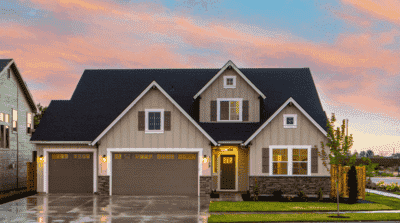Smart home technology, how they work, pros and cons?


What is a smart house?
A smart house refers to a suitable smart home installation where devices and appliances can be automatically controlled remotely from anywhere in the world with an internet connection using a mobile or laptop. Devices in a smart house are connected via the internet, allowing the user to control functions such as temperature, lighting, security cameras, and theater remotely.
Key outcomes
- A smart home allows users to control home appliances, lights, doors, and other devices remotely using a smartphone.
- Smart homes can be set up through wireless systems.
- Smart home technology provides homeowners with ease and cost savings.
Workings of smart homes?
The smart home system is installed in a smartphone to access the door locks, home monitors, televisions, cameras, lights, and even appliances like refrigerators can be controlled through one home automation system. With the help of the installed system, the user can create time schedules for certain changes to take effect. If any motion is detected in the home when they are away then the home automation system alerts the homeowner, while others can call the police.
Best smart home system
Smart homes can be set up with either wireless or hardwired systems or both. The installation of a wireless system is simpler. A wireless home automation system may be installed for some thousand dollars, making it cost-friendly. It includes features like smart lighting, climate control, and one of the most security checks.
The drawback to a wireless system is that you need very strong Wi-Fi coverage for your entire home. You might need to spend some money on range extenders or hardwired wireless access points for this. Wireless smart home systems are generally suitable for smaller living homes or rental properties due to their smaller size.
On the other hand, hardwired systems are considered more trustable and are typically more difficult to hack. A hardwired system can raise the resale value of a home. But there is the downside, it’s fairly expensive. Homeowners may spend tens of thousands of dollars installing a luxury and hardwired smart system. Moreover, you must have a room for Ethernet cables and network hardware equipment.


How to build a smart home
Heating
Greater control over heating devices is possible due to smart home technology, including the ability to control when smart home products are turned on, off, and controlled. If specific conditions are met, smart products may be equipped or moisture sensors to automatically turn off or on. Air conditioners are added to this category of smart home innovations.
Lighting
Lights can be switched on or off, and placed on a schedule based on sunrise or sunset times through just smartphones. Smart bulbs can communicate via Wi-Fi and display matrices or figures to your mobile. This lighting category may also include smart home lighting controls or dimmers. It is possible to install automatic blinds and program them to close on sunrise schedules. On the other hand, electronic curtains allow homeowners to manage their blind using a portable device.
Security
The improved security features of a smart home are among its most logical features. Nowadays, many gadgets are equipped with cameras that can record video, track motion, or provide live video feeds. This can be programmed to show in certain locations on your property or installed to sync with a ringing doorbell. With the person at your door, these recordings might enable audio-capable video calling.
Modern security kits are also installed in a lot of smart homes. This includes the ability to remotely lock doors or windows using a phone, home monitoring, notifications and alerts of suspicious conduct, and motion sensor detectors when people shouldn’t be at home.
Disadvantages and advantages of smart homes
Pros
The installation of a smart home technology system offers ease to homeowners. Homeowners may control all of their attributes such as lights, thermostats, and appliances, with just one device, typically a smartphone or laptop.
Users are able to receive alerts and updates on issues in their homes because they are connected to a portable device. For instance, homeowners may see and speak with visitors at their doors even when they are not home thanks to smart doorbells. The interior temperature, lighting, and appliances may all be set and controlled by users.
Homeowners can save a lot of money by using a smart system after paying for installation. Utilizing devices and appliances more effectively helps reduce energy expenses.
Cons
There are still difficulties even though smart home automation provides convenience and cost savings. Both the technology’s creators and users continue to experience security concerns and
Flaws. For instance, skilled hackers can access internet-connected gadgets in smart homes. In October 2016, a botnet known as Mirai hacked networked DVRs, cameras, and routers in order to launch a DDoS attack that brought down a number of important websites.
Protecting smart appliances and gadgets using a strong password, utilizing encryption when it is available, and only connecting trustworthy devices to one’s network are steps one may take to reduce the dangers of such attacks.
As was already mentioned, implementing smart technology can be expensive, costing as little as a few thousand dollars for a wireless system.




